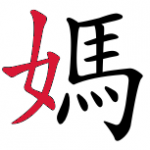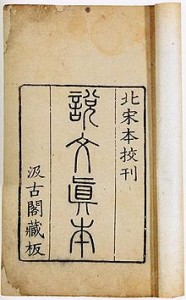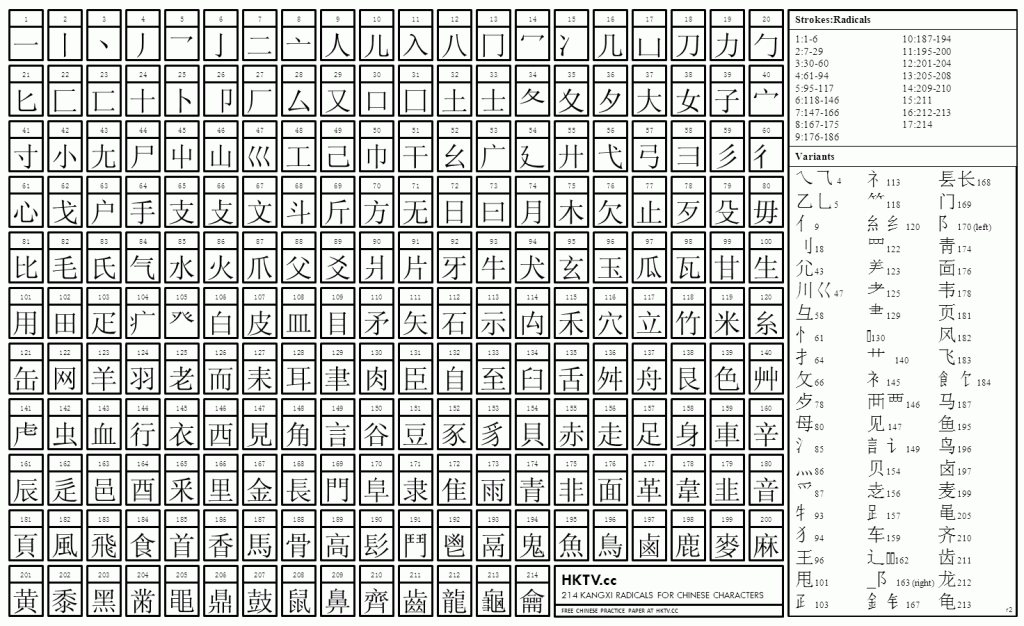Radicals (部首) Posted by Stephen on Oct 14, 2011 in Uncategorized
 As an English native speaker learning written Chinese, you are three steps removed from the language. You may know how to say a word, and even know the proper tones and meaning, but what about writing it?
As an English native speaker learning written Chinese, you are three steps removed from the language. You may know how to say a word, and even know the proper tones and meaning, but what about writing it?
In English a 26 letter alphabet is really all you need to deduce most pronunciations and spelling, but in Chinese, it is much more complex, due to complexity of tones and variation of sound. This is where understanding radicals becomes very important.
A Chinese radical is essentially a “root” component of a Chinese character. Like letters of an English alphabet, these radicals are “building blocks” of words, based on the sound, tones and visual similarity. Thus radicals represent groupings or “clusters” of sounds and meanings into smaller, more easily recognizable subsets.
I think of radicals as consonant-vowel parings to make specific sounds frequently heard in Chinese. With a pictographic vocabulary and tonal linguistic system, it just made sense to divide characters up into subgroups of similar stroke order and radical construction. Here’s a little video demonstration of simple radical components:
Using the Dictionary:
Because radicals help to classify characters, they are very useful in education. As a result, the “radical system” became the backbone of the Chinese dictionary system, and has been used to categorize written Chinese.
In Chinese dictionaries, radicals are used as section headers or 部首 (bùshǒu). These radicals form the basis of an indexing system that has classified Chinese characters throughout the ages, from ancient Shuōwén Jiézì characters to their modern successors. That’s a dictionary system more than 2,000 years old!
If you’re looking for a new word you start with the main radical, find it in a section header and then look for stroke numbers and order until you find the character you’re looking for. The radical is often semantic but may sometimes be a phonetic or merely artificially extracted portion of the character. That means it may not be pronounced anything like the radical or have a definition that is similar to it’s original meaning, but at least you’re pointed in the right direction.
It takes some time getting used to, and often seems like a waste of time when faster, character recognition software exists. But remember, the whole point of learning Chinese radicals is so that you don’t have to turn to your iPhone or PC again. If you learn all (or most) of the Chinese radicals, next time you see an unfamiliar word, you’ll likely be able to tease out a meaning.
There are 214 部首 radicals in the Chinese dictionary, so if you want to get those radicals down, you better start practicing. The radicals go by stroke order and number or stokes with the least complex radicals at the beginning and the most complex ones (17 different strokes) at the end. For a complete list, click here.

Build vocabulary, practice pronunciation, and more with Transparent Language Online. Available anytime, anywhere, on any device.
About the Author: Stephen
Writer and blogger for all things China related. Follow me on twitter: @seeitbelieveit -- My Background: Fluent Mandarin speaker with 3+ years working, living, studying and teaching throughout the mainland. Student of Kung Fu and avid photographer and documentarian.






Comments:
Gabi:
Thank you…Stephen